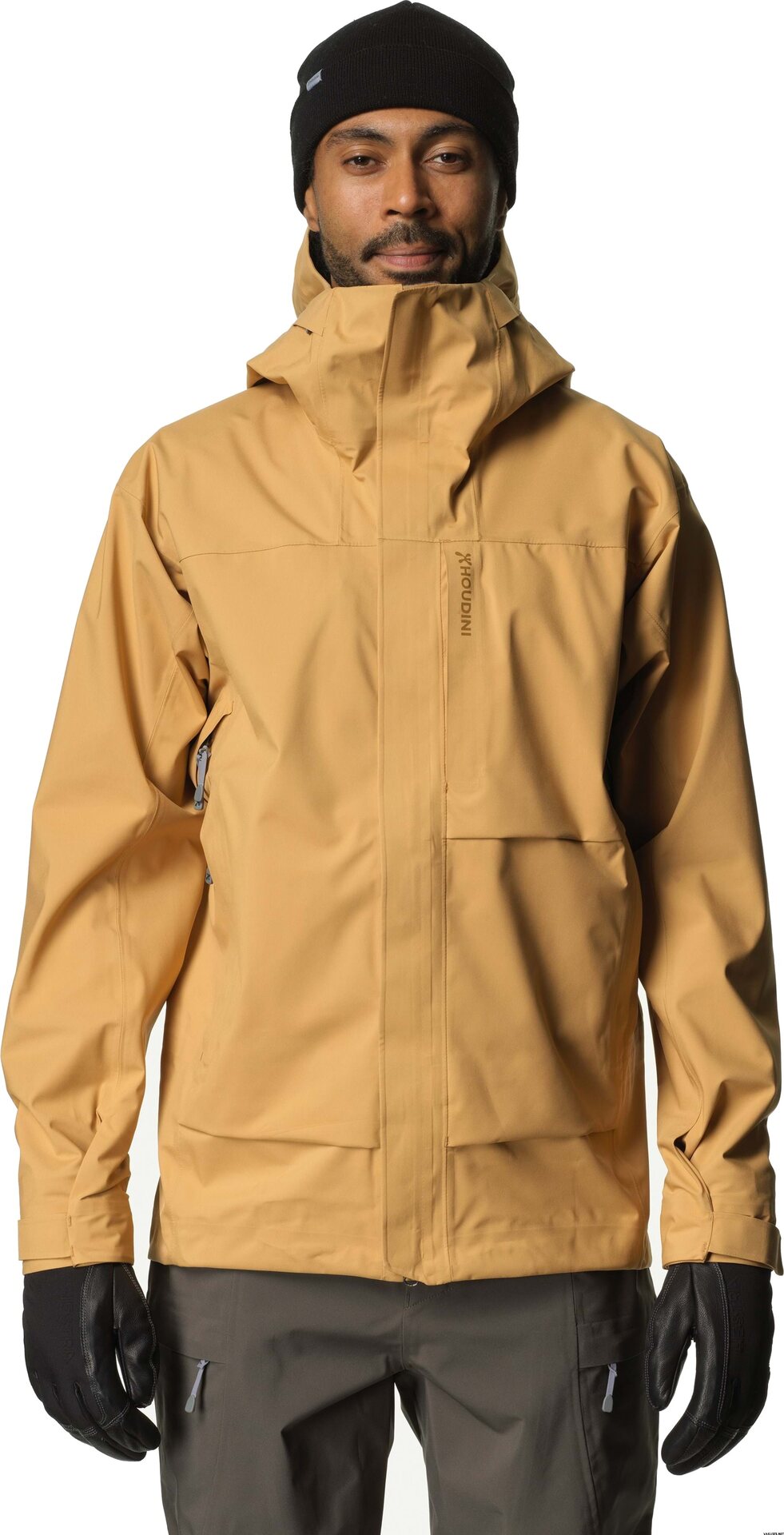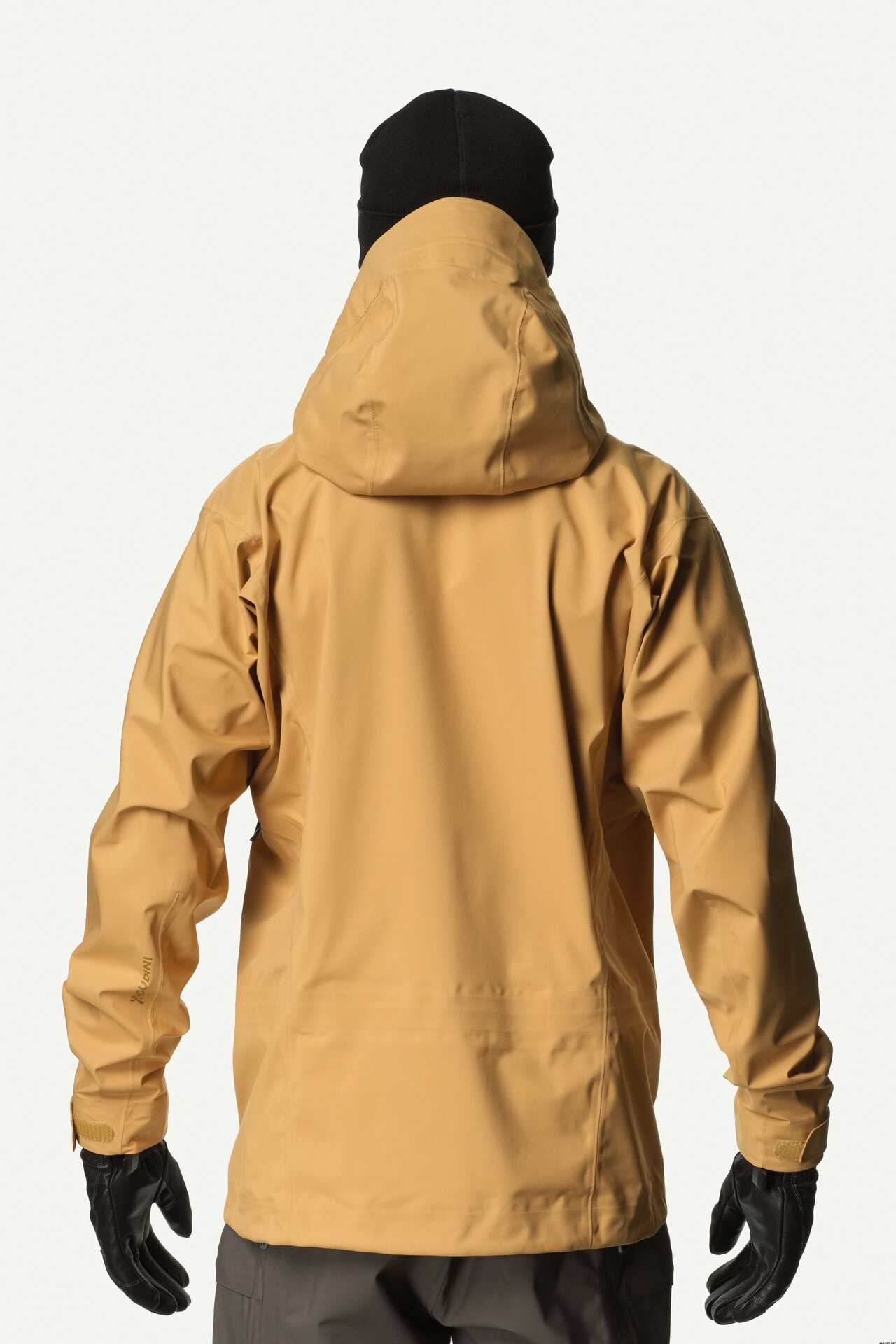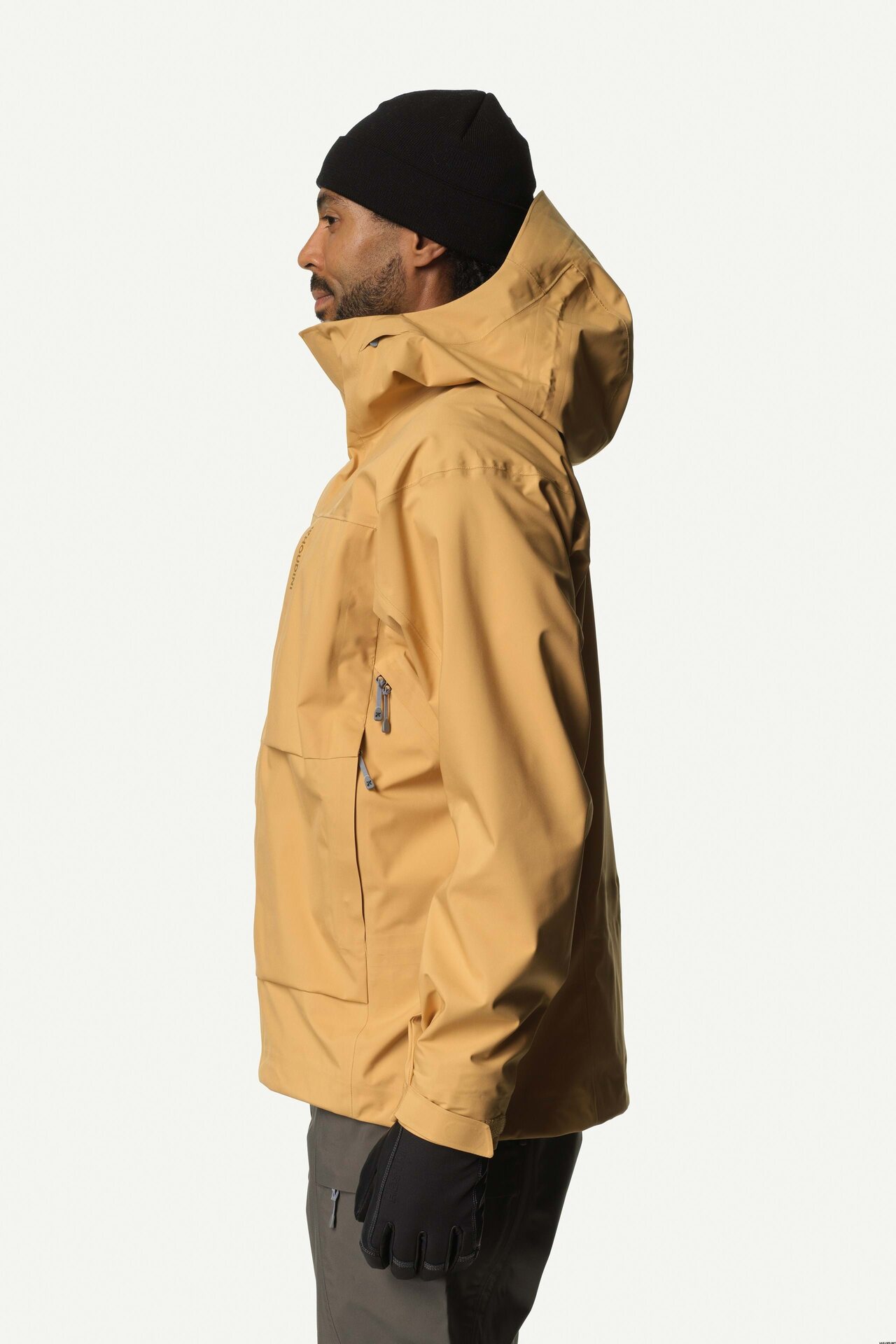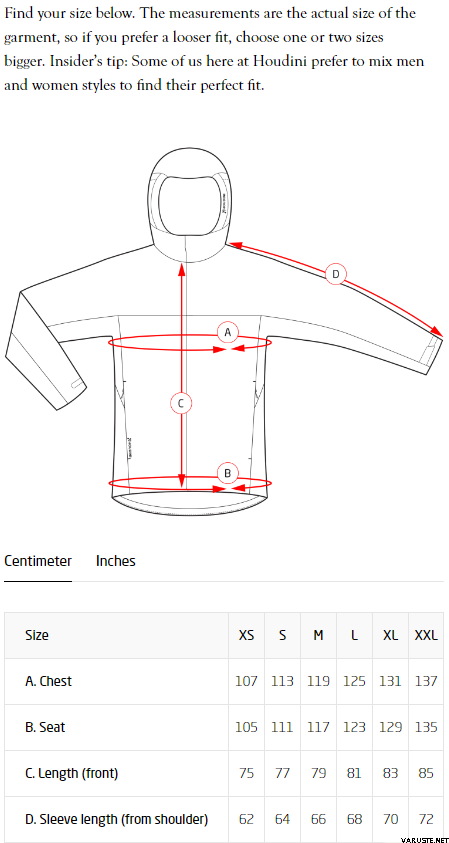Houdinin miesten kuoritakki lasketteluun ja lumilautailuun. Vyötärön lumilukko ja takaa hieman pidempi leikkaus suojaavat sisään pyrkivältä puuterilumelta. Vetoketjulliset tuuletusaukot sivuilla on aseteltu niin, että käytettävyys säilyy myös reppu selässä laskiessa. Suuri huppu mahtuu kypärän päälle ja on säädettävissä yhdellä kädellä hanskaa pois ottamatta. Miellyttävän tuntuinen, tekninen, kestävä takki kaikkiin lumihommiin.
- Suuret taskut sivuilla, rintatasku ja povari
- Suunniteltu Made-to-Move -teknologiaa käyttäen
- Vedenpitävä ja hengittävä
- Teipatut vedenpitävät saumat
- Vettä hylkivät vetoketjut
- Säädettävät hihansuut ja helma
- PFAF-vapaa suojakäsittely
- Kierrätetyistä ja kierrätettävistä materiaaleista
- Bluesign® sertifioidut kankaat
- Kangas valmistettu Japanissa, takki Virossa
Tekniset ominaisuudet
Vedenpitävyys: 20,000 mm H2O tai enemmän
Hengittävyys: 20,000 g/m2/24t
Paino
698 g (koko L)
169g / sqm
Istuvuus
Normaali (Regular)
Materiaalit
Päämateriaali: 70% kierrätyspolyesteri, 30% polyesteri
Kalvo: Atmos, 100% polyesteri
Taustakangas: 100% polyesteri jersey
DWR (PFAS-vapaa)
SustainabilityCircularThe Circular label means that this product is made either from recycled and recyclable or renewable and biodegradable fibers. Most products in today's society are made in a linear lifecycle, where earth's resources are extracted, used and then discarded. This is not working in the long run and comes at a great environmental impact. Instead, Houdini wants to close the loop and reuse the material already made. When your Houdini garments are completely worn out, return them to Houdini through the recycling units they have in all their own stores and at many retailers.
Recycled
The Recycled label means that this garment contains at least 50% recycled fibers (often more, see product description). The source is either recycled clothes or other sources like PET bottles. Houdini mainly uses recycled polyester, which has many benefits. It reduces both CO2 emissions and water use compared to virgin polyester. How much depends on the type of recycling. One of Houdini's suppliers show 32% less CO2 emissions and 94% less water use for mechanically recycled polyester. Besides the production impact, the major shift is using "waste" as raw material instead of crude oil.
Recyclable
The Recyclable label means that the raw material in this product can be used for new products, instead of becoming waste. Houdini's goal is that by 2030, they will take no raw material to their products from the earth's crust. Circular products, made from recycled and recyclable materials are a real game changer. When your Houdini garments are completely worn out, please return them to Houdini. Houdini has recycle units in all of their own stores and at many retailers.
Bluesign
The Bluesign® Label means that the production is vetted by a third party to eliminate any harmful chemicals or substances right from the beginning of the production process. This benefits both people, animals and our entire planet.
Care Instructions Shell clothes with membrane
Air out clothes instead of washing them to save water, energy and to make the garments last longer. Make sure to wash your shell if it has been used in saltwater or has gotten very sweaty or dirty as this weakens the performance of the garment. They can reduce the fabric’s breathability and damage the water repellent surface. The dirt can even allow for moisture to leak through the fabric.
Use a washing bag to protect your garments and to prevent fibers from leaking. When cleaning the bag and filter in the machine, make sure to wipe it clean and throw the lint in your trash can. Never rinse it in water since we don’t want the fibers to end up in lakes or oceans.
Machine wash cold.
There are special detergents for shells, but mild, environmentally certified detergents work just as fine. Make sure to use the right dose.
Avoid fabric softener. Besides being harmful for our environment, they have a negative impact on the garment performance, mainly moisture transportation and breathability.
Hang dry. Just remember to introduce heat to the garment after washing to reactivate the water resistant surface of the outer fabric. Use a drying cabinet, dryer or iron. Make sure you monitor the heat so the garment does not melt.
You can reapply or enforce the water repellent treatment with a wash-in or spray when needed. Always use an organic DWR.
Remember to introduce heat to the garment after washing to reactivate the water resistant surface of the fabric.






